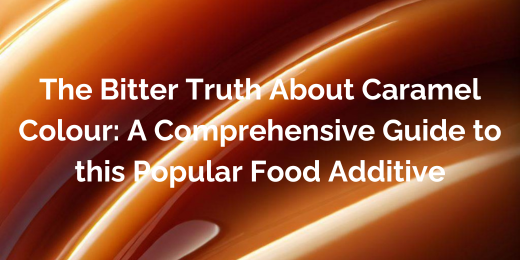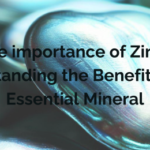Caramel colour risks
Caramel Colour is a popular food additive that is commonly used in the food industry. It is defined as a dark brown liquid or powder that is obtained by heating carbohydrates, such as sugars, in the presence of an acid or an alkaline substance. Caramel Colour has many applications in the food industry, including as a Colouring agent, a flavour enhancer, and a stabilizer.
Caramel colour has a long history dating back to ancient times when it was used as a colouring agent in food and textiles. Today, it is used in various food products, including soft drinks, sauces, and baked goods. Despite its versatility, stability, and cost-effectiveness, the use of caramel colour in food products has been a cause for concern due to potential caramel colour risks. Meanwhile, when considering gluten-free baking, it’s important to understand the effects of xanthan gum. Xanthan gum plays a crucial role in gluten-free baking, improving texture, and serving as a substitute for gluten, which enhances the overall quality of gluten-free baked goods.
What is Caramel Colour?
Caramel colour is produced by heating carbohydrates such as sugars, syrups, or starches in an acid or alkaline substance. The type of carbohydrate, temperature, and pH levels used in the process affect the final colour and flavour of the caramel. There are four types of caramel colour, ranging from light amber to almost black.
Type I caramel is lightest in colour and is used in products such as baked goods and cereals. Type II caramel is medium brown and is used in colas, baked goods, and soy sauce. Type III caramel is dark brown and is used in beer, chocolate, and gravies. Type IV caramel is almost black and is used in sauces, gravies, and pet foods. Although caramel colour is widely used as a food additive due to its stability, low cost, and versatility, it is important to consider the potential caramel colour risks. It is often used to enhance the colour, flavour, and texture of food products.
Health Effects of Caramel Colour
Despite its widespread use, there are potential risks associated with the consumption of caramel colour. One concern is its potential link to cancer. The International Agency for Research on Cancer (IARC) has classified one type of caramel colour, known as 4-methylimidazole (4-MEI), as a possible human carcinogen. 4-MEI is formed during the production of some types of caramel colour and can be found in various food products, including sodas and other beverages.
However, it is important to note that the risk of cancer associated with 4-MEI exposure from caramel colour is considered to be low, especially when compared to other cancer-causing agents. In addition to cancer, caramel colour has also been linked to other health concerns, including allergies and causes of asthma. To avoid the potential caramel colour risks associated with its consumption, it is important to consume this food additive in moderation, just as with any other additive. Awareness of any health concerns linked to its consumption is crucial.
Other Health Effects of Caramel Colour
Caramel colour is a regulated food additive in many countries, including the United States and the European Union. In the United States, caramel colour is regulated by the Food and Drug Administration (FDA). It is considered safe for consumption when used within the approved limits. The FDA has set limits on the amount of 4-MEI that can be present in caramel colour.
In the European Union, caramel colour is regulated by the European Food Safety Authority (EFSA). It is considered safe for consumption when used within the approved limits. The EFSA has also set limits on the amount of 4-MEI that can be present in caramel colour. Other countries also have regulations for caramel colour, with varying limits and requirements. Awareness of caramel colour risks is crucial when consuming it in food products. It is equally important to understand the regulations that govern its usage in your country. This ensures the safe and responsible consumption of this popular food additive.
Alternatives to Caramel Colour
Alternative options are available for those concerned about the potential risks of consuming caramel colour. Natural alternatives include beet juice, carrot juice, and turmeric, which can be used as natural colouring agents in food products, making them suitable for organic food planning. Synthetic alternatives to caramel colour include food dyes such as Yellow 5 and Red 40. While synthetic alternatives may be cheaper and more readily available than natural ones, they may also come with potential risks and side effects.
Benefits of using alternatives to caramel colour include avoiding potential health risks associated with consuming caramel colour and using natural or synthetic ingredients that may be better suited to specific dietary needs or preferences. While caramel colour has been used for a long time in the food industry, it is essential to acknowledge the potential caramel colour risks associated with its consumption. This has led to the search for alternatives that offer the same functionality without the potential health hazards. It is essential to weigh the benefits and risks before choosing which food additives to use.
Conclusion
In summary, caramel colour is a widely used food additive that serves as a colouring agent in various food products. While it is generally considered safe for consumption when used within the approved limits, there are potential risks associated with its consumption, including a possible link to cancer. Alternatives to caramel colour, both natural and synthetic, are available for those who wish to avoid the potential risks associated with consuming caramel colour.
To make healthier food choices, it is important to read food labels carefully and be aware of the ingredients in the products you consume. Choosing whole, unprocessed foods and limiting consumption of processed and packaged foods can also help to promote a healthier diet. Ultimately, moderation and balance are key when incorporating caramel colour and other food additives into your diet.



